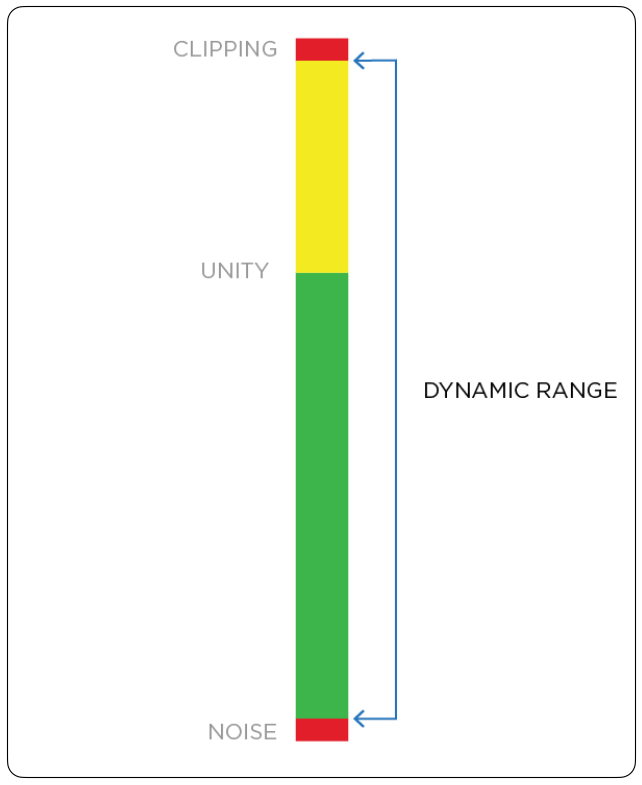092 – Dynamic Range and Headroom
In live sound, we need to know how much volume we have in the speaker system before clipping.
Written by Scott Adamson
In a recent post, we discussed how audio devices have a maximum amount of signal they can handle. If we have a really hot signal that exceeds this, we start to clip that waveform, which is not ideal.
Audio devices also have a minimum signal they can effectively process, which is the noise floor. If the inherent noise in the audio circuitry is louder than the signal running through it, the output isn’t useable.
So, if we take the difference (in decibels) between the noise floor and the maximum signal the device can handle, we have the dynamic range of that device.
This isn't really a term you're going to hear on stage too much, because we aren’t often thinking about the noise floor in live sound. The ambient noise of whatever venue you’re in will likely be louder than the inherent noise in the PA system.
Get real-world live sound mixing tips straight to your inbox.
After all, the whole point of what we do is to make things louder for a lot of people to hear! So we're almost always going to be thinking about how much more volume we have left in the system before clipping. This is called headroom — it's the difference between your current volume and the max volume of the system.
Like everything in audio, we do have to think about the whole signal chain with this. If any part of the signal chain is clipping, we’ve run out of headroom. However, if our gain structure is balanced, we shouldn’t have any problem getting solid signals all the way from the inputs, through the mixer, into the speaker system processing and on to the amplifiers.
But amplifiers will definitely start clipping if they are driven too hard! Actually, it is very common to run out of headroom at the amplifiers, especially for loud concert situations. This can be helped with limiters, which are built into the processors we find on most speaker systems.
Limiters provide a kind of brick wall, which won’t let the signal past a set threshold. So, if we end up sending a really hot signal to a speaker system processor, it has the ability to limit that signal and keep it from ever clipping the amplifier.



